
Diabetes mellitus is one of the most common tending to increase the incidence and spoiling diseases statistics.Symptoms of diabetes appear not on the same day, the process flows chronically, with the increase and aggravation of endocrine-exchange disorders.True, the debut of type I diabetes is significantly different from the early stage of the second.
Among the entire endocrine pathology, diabetes confidently holds the championship and accounts for more than 60% of all cases.In addition, disappointing statistics indicate that 1/10 of the “diabetics” are children.
The probability of acquiring the disease increases with age and, thus, every ten years the number of the group doubles.This is explained by an increase in life expectancy, improving early diagnostics, a decrease in physical activity and an increase in the number of people with excess weight.
Types of diabetes
Many have heard of such a disease as non -alichest diabetes.So that the reader subsequently does not confuse diseases that have the name “diabetes”, probably, the clarification of their differences will be useful.
Non -adalar urethra
Nonachary diabetes is an endocrine disease that occurs due to neuroinfections, inflammatory diseases, tumors, intoxications and due to insufficiency, and sometimes the complete disappearance of adg -vasopressin (antidihuretic hormone)
This explains the clinical picture of the disease:
- Constant dryness of the mucous membranes of the oral cavity, incredible thirst (a person can drink up to 50 liters of water in 24 hours, stretching the stomach to large sizes);
- The allocation of a huge amount of unconditioned light urine with low specific gravity (1000-1003);
- Catastrophic weight loss, weakness, decrease in physical activity, disorders of the digestive system;
- A characteristic change in the skin ("parchment" skin);
- Atrophy of muscle fibers, weakness of the muscle apparatus;
- The development of dehydration syndrome in the absence of fluid intake for more than 4 hours.
The disease in terms of complete cure has an adverse prognosis, performance is significantly reduced.
Brief anatomy and physiology
A non -ire organ - the pancreas performs a mixed secretory function.Its exogenous part of external secretion, producing enzymes involved in the digestion process.The endocrine part, which is entrusted with the mission of internal secretion, is engaged in the development of various hormones, includingInsulin and glucagon.They are key in ensuring the constancy of sugar in the human body.
The endocrine section of the gland represent the islands of Langerganes, consisting of:
- A-cells that occupy a quarter of the entire space of islands and are considered the place of Glucagon products;
- B cells occupying up to 60% of the cell population synthesizing and accumulating insulin, the molecule of which is a polypeptide of two chains, which carries in a certain sequence of 51 amino acid;
- D-cells producing somatostatin;
- Cells producing other polypeptides.
Thus, the conclusion suggests itself:Damage to the pancreas and islands of Langerganes, in particular, is the main mechanism that inhibits the production of insulin and trigger the development of the pathological process.
Types and special forms of the disease
The lack of insulin leads to a violation of sugar constancy (3.3 - 5.5 mmol/l)and contributes to the formation of a heterogeneous disease called diabetes (diabetes):
- The complete absence of insulin (absolute deficiency) formsInsulin -dependenta pathological process that refers toType I diabetes (ISD);
- Lack of insulin (relative deficiency), which triggers in the initial stage a violation of carbohydrate metabolism, slowly but surely leads to developmentinsulin -dependentdiabetes (INZSD), which is calledtype II diabetes.
Due to the violations in the body of the utilization of glucose, and, therefore, its increase in blood serum (hyperglycemia), which, in principle, is a manifestation of the disease, signs of diabetes mellitus, that is, a total disorder of metabolic processes at all levels, begin to appear over time.
In addition to diabetes of the first and second types, special types of this disease are distinguished:
- Secondary diabetes,The pancreas arising from acute and chronic inflammation of the pancreas (pancreatitis), malignant neoplasms in the parenchyma of the gland, cirrhosis of the liver.A number of endocrine disorders, accompanied by excessive production of insulin antagonists (acromigaly, Kushing's disease, phoochromocytoma, thyroid disease) lead to the development of secondary diabetes.Many drugs consumed for a long time have a diabetogenic effect: diuretics, some antihypertensive drugs and hormones, oral contraceptives, etc.;
- Diabetes in pregnant women (gestational),due to the peculiar mutual influence of hormones of the mother, child and placenta.The pancreas of the fetus producing its own insulin begins to slow down the products of insulin with the mother gland, as a result of which this special form is formed during pregnancy.However, with proper control, gestational diabetes usually disappears after childbirth.Subsequently, in some cases (up to 40%) in women with a similar history of pregnancy, this fact can threaten the development of type II diabetes (within 6-8 years).
Why is there a "sweet" disease?
The “sweet” disease forms a rather “motley” group of patients, therefore it becomes obvious that the ISSD and its insulin -dependent “counterpart” genetically occurred differently.There is evidence of the connection of insulin-dependent diabetes with the genetic structures of the HLA system (the main complex of histocompatibility), in particular, with some genes of the locus of the D-Region.For INZSD, such a relationship has not been seen.

For the development of diabetes of the type of type of type of one genetic predisposition, the pathogenetic mechanism is launched by provoking factors:
- Congenital inferiority of the islets of Langerganes;
- Adverse influence of the external environment;
- Stress, nervous loads;
- Traumatic brain injuries;
- Pregnancy;
- Infectious processes of viral origin (flu, “pig”, cytomegalovirus infection, coksaki);
- A tendency to constant overeating leading to excess fat deposits;
- The abuse of confectionery (sweet tooth risks more).
Before illuminating the causes of type II diabetes, it would be advisable to dwell on a very controversial issue: who suffers more often - men or women?
It has been established that at present the disease is more often formed in women, although in the 19th century the SD was a “privilege” of male.By the way, now in some countries of Southeast Asia the presence of this disease in men is considered predominant.
The predisposing conditions for the development of type II diabetes mellitus can be attributed:
- Changes in the structural structure of the pancreas as a result of inflammatory processes, as well as the appearance of cysts, tumors, hemorrhages;
- Age after 40 years;
- Excess weight (the most important risk factor for INZSD!);
- Vascular diseases due to the atherosclerotic process and arterial hypertension;
- In women, pregnancy and the birth of a child with a high body weight (more than 4 kg);
- The presence of relatives suffering from diabetes;
- Strong psycho -emotional stress (hypermostation of the adrenal glands).
The causes of the disease of various types of diabetes in some cases coincide (stress, obesity, the influence of external factors), but the beginning of the process in diabetes of the first and second type is different, moreover,ISSD is the lot of children's and young, and insulin -dependent prefers the older generation people.
Why do you want to drink so much?
The characteristic symptoms of diabetes, regardless of the form and type, can be represented in the following form:
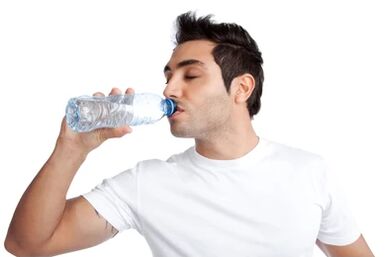
- Dry mucous oral cavity;
- Thirst, which almost cannot be satisfied, associated with dehydration;
- Excessive urine formation and its release by the kidneys (polyuria), which leads to dehydration;
- An increase in the concentration of glucose in the blood serum (hyperglycemia), due to suppression of sugar disposal with peripheral tissues due to insulin deficiency;
- The appearance of sugar in the urine (glucose) and keton bodies (ketonuria), which are normally present in negligible quantities, but with diabetes mellitus are intensively produced by the liver, and when excreting from the body are detected in the urine;
- Increased blood plasma (in addition to glucose) of urea and sodium ions (NA+);
- Weight loss, which in the case of decompensation of the disease is a characteristic feature of a catabolic syndrome, which develops due to the decay of glycogen, lipolysis (mobilization of fats), catabolism and glucose (transformation into glucose) of proteins;
- Violation of the indicators of the lipid spectrum, an increase in general cholesterol due to the low -density lipoproteins fraction, NEZHK (unussterified fatty acids), triglycerides.The increasing content of lipids begins to actively go to the liver and there is intensively oxidized there, which leads to the excessive formation of ketone bodies (acetone + β-oxielyic acid + acetouxus acid) and further entering their blood (hyperketoninomia).Excessive concentration of ketone bodies threatens a dangerous state calleddiabetic ketoacidosis.
Thus, the general signs of diabetes can be characteristic of any form of the disease, however, in order not to confuse the reader, it should still be noted the features inherent in this or that type.
Type I diabetes - "privilege" of young
ISD is characterized by sharp (weeks or months) beginning.Signs of type I diabetes are pronounced and are manifested by clinical symptoms typical of this disease:
- A sharp drop in weight;
- An unnatural thirst, a person simply cannot get drunk, although he tries to do this (polydipsy);
- A large amount of urine secreted (polyuria);
- Significant excess of the concentration of glucose and keton bodies in the blood serum (ketoacidosis).In the initial stage, when the patient may still not know about his problems, it is likely to develop diabetic (ketoacidotic, hyperglycemic) coma - a condition that is extremely life -threatening, therefore insulin therapy is prescribed as early as possible (only diabetes will be hastened).

In most cases, after the use of insulin, metabolic processes are compensated,The need for the body in insulin sharply declines, a temporary “recovery” comes.However, this short state of remission should not relax either the patient or the doctor, since after some period of time the disease will remind of himself again.The need for insulin as the duration of the disease increases may increase, but, basically, in the absence of ketoacidosis, will not exceed 0.8-1.0 units/kg.
Signs indicating the development of late complications of diabetes (retinopathy, nephropathy) may appear in 5-10 years.The main reasons for the fatal outcome of the ISD include:
- Terminal renal failure, which is a consequence of diabetic glomerulosclerosis;
- Cardiovascular disorders, as complications of the underlying disease, which happen somewhat less often renal.
Illness or age -related changes?(type II diabetes)
INZSD has been developing for many months or even years.The problems arising, a person carries to various specialists (dermatologist, gynecologist, neurologist ...).The patient does not suspect that the diseases are different in his opinion: furunculosis, skin itching, fungal lesions, pain in the lower extremities - signs of type II diabetes.Patients get used to their condition, and diabetes continues to slowly develop, affecting all systems, and primarily vessels.
The INZSD is characterized by a stable slow course, as a rule, without showing a tendency to ketoacidosis.
Treatment of type 2 diabetes usually begins in compliance with the diet with a limitation of easily digestible (refined) carbohydrates and the use (if necessary) to reduce drugs of drugs.Insulin is prescribed if the development of the disease has reached the stage of severe complications or there is the immunity of oral drugs.
The main cause of death in patients with INZSD was recognized as a cardiovascular pathology that has become a consequence of diabetes.As a rule, this is a heart attack or stroke.
Diabetes treatment products
The basis of medical measures aimed at compensating for diabetes are three main principles:

- Compensation for a lack of insulin;
- Regulation of endocrine-exchange disorders;
- Prevention of diabetes mellitus, its complications and their timely treatment.
The implementation of these principles is carried out based on 5 main positions:
- Diabetes nutrition is assigned the party of the “first violin”;
- The system of physical exercises, adequate and individually selected, goes after the diet;
- Medicines that reduce sugar are mainly used to treat type 2 diabetes;
- Insulin therapy is prescribed if necessary with INZSD, but is the main in the case of type 1 diabetes;
- Teaching patients for self -control (skills of taking blood from a finger, using a glucometer, the introduction of insulin without outside help).
Laboratory control over these positions indicates the degree of compensation after the following biochemical studies:
| Indicators | A good degree of compensation | Satable | Bad |
|---|---|---|---|
| Glucose level on an empty stomach (mmol/l) | 4.4 - 6.1 | 6.2 - 7.8 | Ø 7.8 |
| The sugar content in the blood serum 2 hours after eating (mmol/l) | 5.5 - 8.0 | 8.1 - 10.0 | Ø 10.0 |
| The percentage of glycosylated hemoglobin (HBA1, %) | <8.0 | 8.0 - 9.5 | Ø 10.0 |
| The indicator of total cholesterol in serum (mmol/l) | <5.2 | 5.2 - 6.5 | Ø 6.5 |
| Triglycerides level (mmol/l) | <1.7 | 1.7 - 2.2 | Ø 2.2 |
An important role of a diet in the treatment of INZSD
Diabetes nutrition is very well -known, even far from diabetes for people, table No. 9. Being in a hospital about any disease, now and then you can hear about a special nutrition that is always in separate pots, differs from the rest of the diets and is issued after a certain password is spoken: “I have the ninth table”.What does all this mean?What is the difference between this mysterious diet from everyone else?
You should not be mistaken, looking after his “porridge” of the diabetics that they are deprived of all the joys of life.Diet in diabetes is not so different from the nutrition of healthy people, the right amount of carbohydrates (60%), fats (24%), proteins (16%) patients receive.
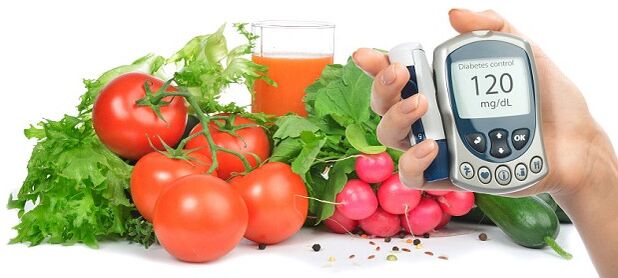
Power supply for diabetes consists in replacing refined sugars in products with slowly split carbohydrates.Sugar sold in a store for everyone and confectionery based on it fall into the category of prohibited food.
As for the balance of the nutrition, everything is strict here: the diabetic must mandatory use the required amount of vitamins and pectins, which should be at least 40 g.per day.
Strictly individual physical activity
Physical activity for each patient is selected individually by the attending physician, while the following positions are taken into account:

- Age;
- Symptoms of diabetes;
- Severity of the flow of the pathological process;
- The presence or absence of complications.
The physical activity prescribed by the doctor and performed by the “ward” should contribute to the “combustion” of carbohydrates and fats, without attracting insulin to the participation.Its dose, which is necessary in order to compensate for metabolic disorders, is noticeably falling, which should not be forgotten, because, by preventing the increase in blood sugar, you can get an undesirable effect.Adequate physical activity reduces glucose, the introduced dose of insulin breaks down, and as a result, a decrease in sugar levels below permissible values (hypoglycemia).
Thus,The dosage of insulin and physical activity requires very close attention and thorough calculation,In order to complement each other, do not jointly step over the lower boundary of normal laboratory indicators.
Or maybe try folk remedies?
Treatment of type 2 diabetes is often accompanied by the search for patients with folk remedies who can inhibit the process and as far as possible delay the time of taking dosage forms.
Without looking at the fact that our distant ancestors practically did not know about such a disease, folk remedies for the treatment of diabetes exist, but we should not forget thatInfusions and decoctions prepared from various plants are an auxiliary agent.The use of domestic drugs for diabetes does not relieve the patient from compliance with diet, control of blood sugar, visiting a doctor and fulfilling all his recommendations.

To combat this pathology at home, quite famous folk remedies are used:
- Bark and white mulberry leaves;
- Grains and peeling oats;
- Walnut partitions;
- Bay leaf;
- Cinnamon;
- Acorns;
- Nettle;
- Dandelion.
When diet and folk remedies no longer help ...
The so -called first generation preparations, widely known at the end of the last century, remained in the memoirs, and they were replaced by new generation medicines, which make up 3 main groups of diabetes produced by the pharmaceutical industry.

What means is suitable for one or another patient - the endocrinologist decides.And so that patients do not self -medicate and do not decide to use these drugs for diabetes at their discretion, we will give several visual examples.
Derivatives of sulfonylmochevins
Currently, derivatives of the second generation sulfonema are prescribed, acting from 10 hours to a day.Usually patients take them 2 times a day half an hour before meals.
These drugs are absolutely contraindicated in the following cases:
- Type 1 diabetes;
- Diabetic, hyperosmolar, lactacidotic coma;
- Pregnancy, childbirth, lactation;
- Diabetic nephropathy, accompanied by impaired filtration;
- Diseases of the hematopoietic system with a concomitant decrease in white blood cells - leukocytes (leukocytopenia) and thrombocytic hematopoiesis link (thrombocytopenia);
- Severe infectious and inflammatory liver lesions (hepatitis);
- Diabetes complicated by vascular pathology.
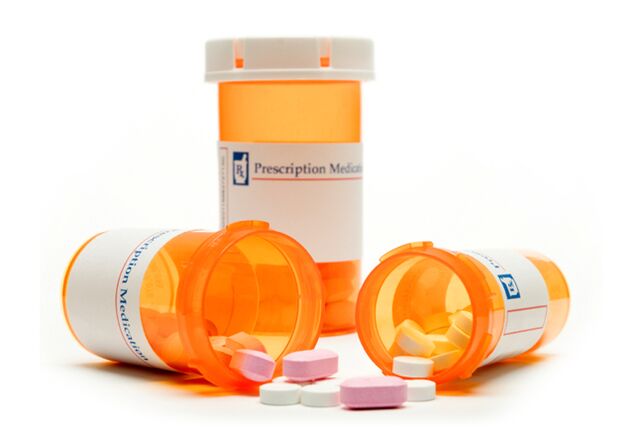
In addition, the use of drugs of this group can threaten the development of allergic reactions that manifest:
- Itching and urticaria, sometimes reaching the edema of Quincke;
- Disorders of the digestive system;
- Changes from the blood side (reduction in the level of platelets and leukocytes);
- Perhaps a violation of the functional abilities of the liver (jaundice due to cholestasis).
Sahabro -winning facilities of the Biguanides family
Biguanides (guanidine derivatives) are actively used for the treatment of type 2 diabetes, often adding sulfonamides to them.They are very rational for use by patients with obesity, however, people who have liver, kidneys and cardiovascular pathology are sharply limited, switching to more sparing drugs of the same group or α-glucosid inhibitors inhibiting carbohydrate absorption in the small intestine.
Absolute contraindications to the use of Biguanides are considered:
- ISD (type 1 diabetes);
- Significant weight loss;
- Infectious processes, regardless of localization;
- Surgical interventions;
- Pregnancy, childbirth, breastfeeding period;
- Coma states;
- Liver and renal pathology;
- Oxygen starvation;
- Microangiopathy (2-4 degrees) with visual impairment and renal function;
- Trophic ulcers and necrotic processes;
- Violation of blood circulation in the lower extremities due to various vascular pathology.
Insulin treatment
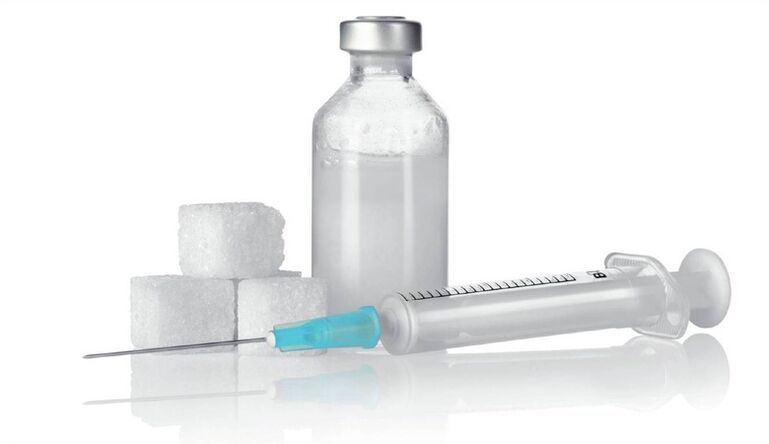
From the above, the fact that the above becomes thatThe use of insulin is the main treatment of type 1 diabetes, all emergency conditions and severe complications of diabetes.The INZSD requires the appointment of this therapy only in cases of insulin -use forms, when correction by other means does not give the proper effect.
Modern insulins, called monocompetent, represent two groups:
- Monocompetent pharmacological forms of human insulin substance (semi-synthetic or DNA-rocombinant), which, undoubtedly, have a significant advantage over pork preparations.They have practically no contraindications and side effects;
- Monocompetent insulins obtained from the pancreas of the pig.These drugs compared with human insulins require an increase in the dose of the drug by approximately 15%.
Diabetes is dangerous complications
Due to the fact that diabetes is accompanied by damage to many organs and tissues, its manifestations can be found in almost all body systems.Complications of diabetes are considered:
- Pathological changes in the skin: diabetic dermopathy, lipoid necrobiosis, furunculosis, xanthoma, fungal lesions of the skin;
- Bone-articular diseases:
- Diabetic osteoarthropathy (joint joint - a change in the ankle joint), which occurs against the background of a violation of microcirculation and trophic disorders, accompanied by dislocations, subluxis, spontaneous fractures preceding the formationdiabetic foot;
- Diabetic hyropathy, characterized by stiffness in the joints of the hands, which is more often formed in children with diabetes of children;

- Respiratory diseases: long -termprolonged bronchitis, pneumonia,Increasing the frequency of development of tuberculosis;
- Pathological processes affecting the digestive organs:Diabetic enteropathyaccompanied by increased peristalsis, diarrhea (up to 30 times a day), a decrease in body weight;
- Diabetic retinopathy- one of the most serious complications characterized by damage to the organs of vision;
- The most common complication of diabetes is consideredDiabetic neuropathyand its variety -Polyneuropathyreaching 90% of all forms of this pathology.The frequently found to diabetic polyneuropathy isDiabetic foot syndrome;
- The pathological state of the cardiovascular system, in most cases, is the cause of the death of diabetes mellitus.Hypercholesterolemia and vascular atherosclerosis, which, with diabetes, begin to develop at a young age, inevitably lead to diseases of the heart and blood vessels (coronary heart disease, myocardial infarction, heart failure, cerebrovascular impairment).
Prevention
Measures for the prevention of diabetes are built based on the causes of its defiant.In this case, it is advisable to talk about the prevention of atherosclerosis, arterial hypertension, including the struggle with excess weight, bad habits and food addictions.
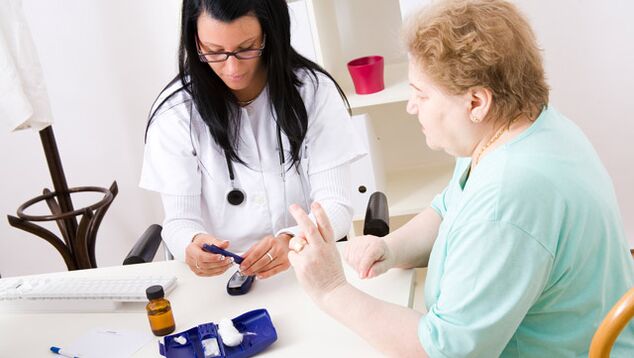
Prevention of complications of diabetes consists in preventing the development of pathological conditions arising from diabetes itself.Correction of glucose in blood serum, compliance with the diet, adequate physical activity, the implementation of the doctor’s recommendations will help to push the consequences of this rather formidable disease.



















